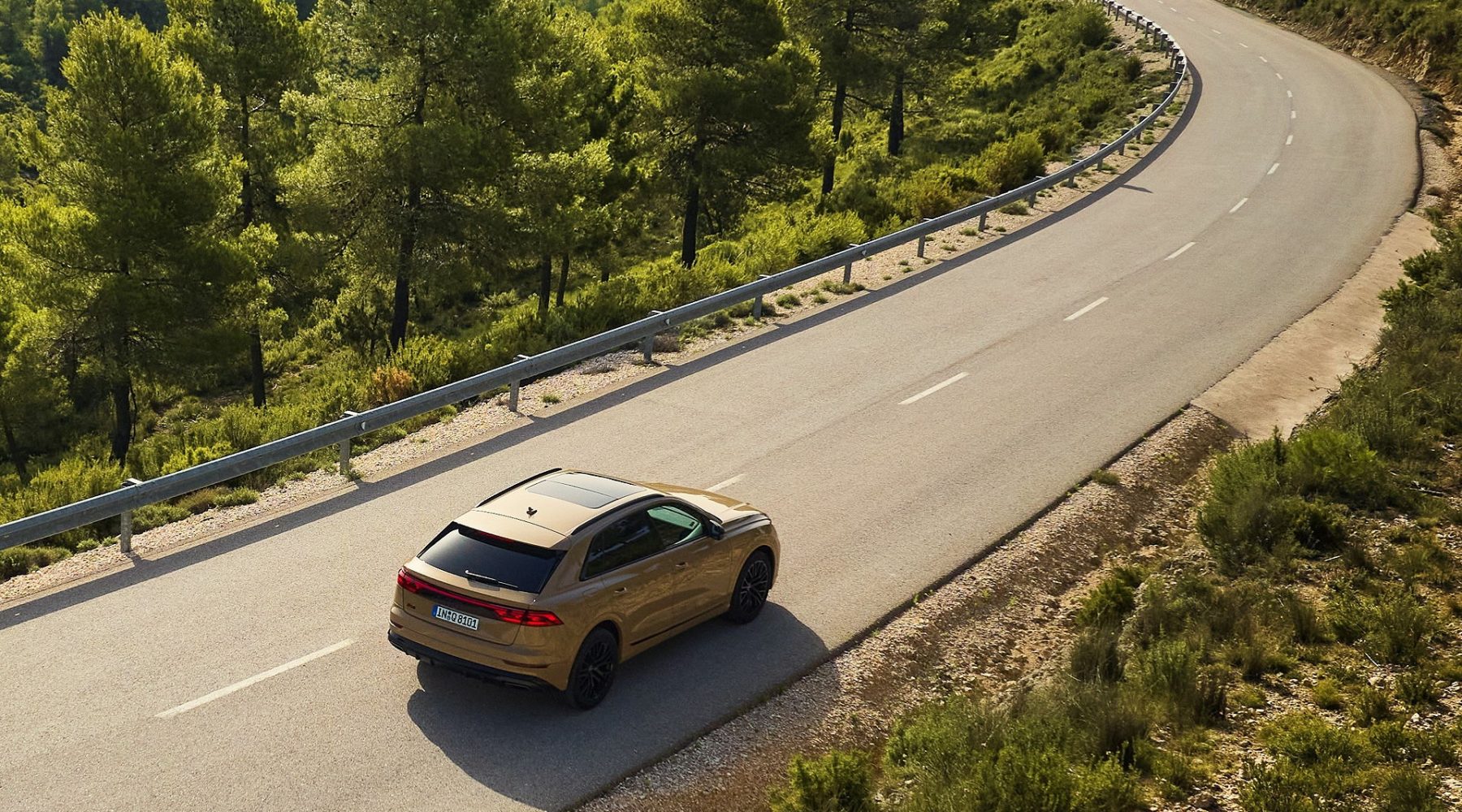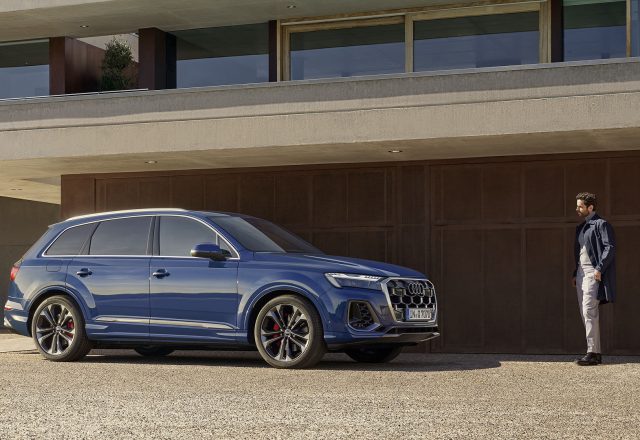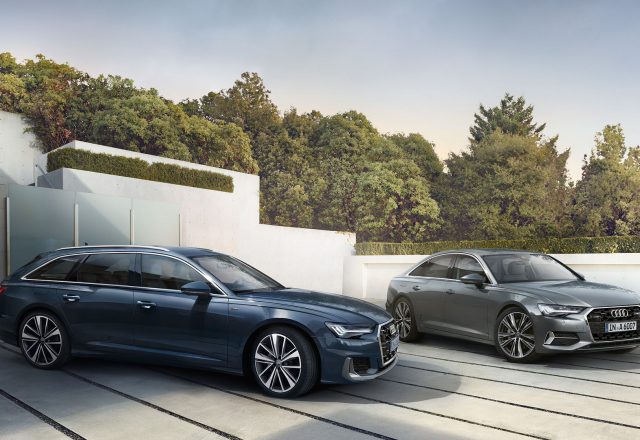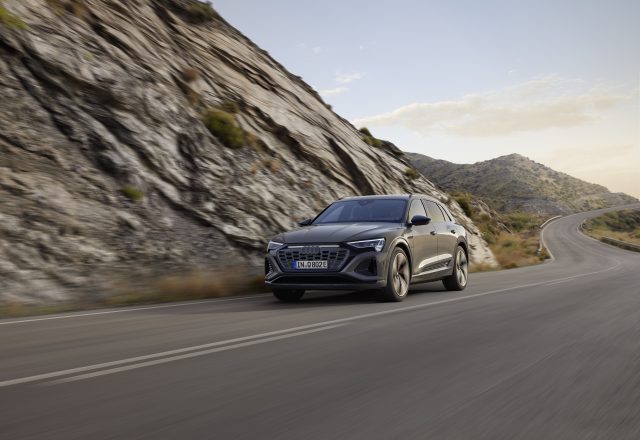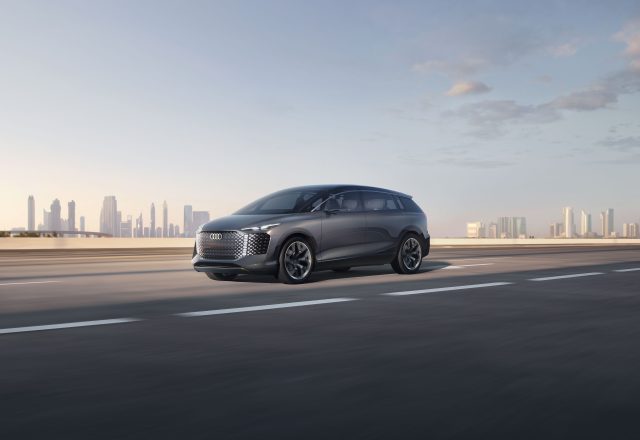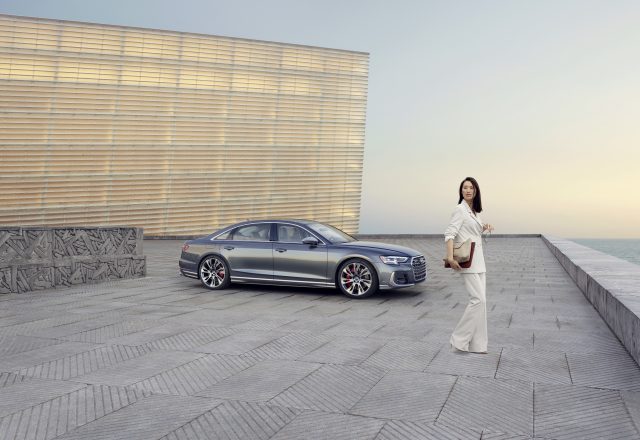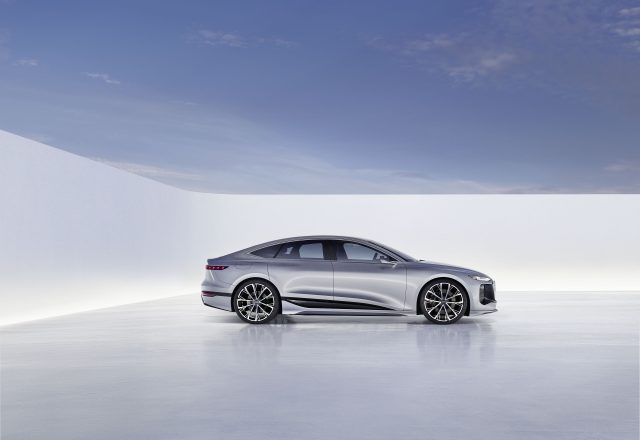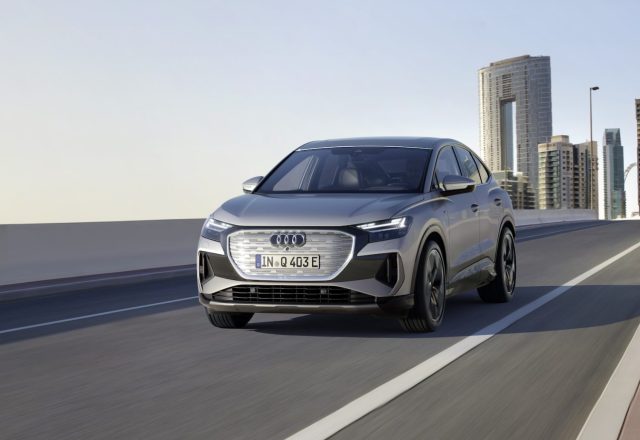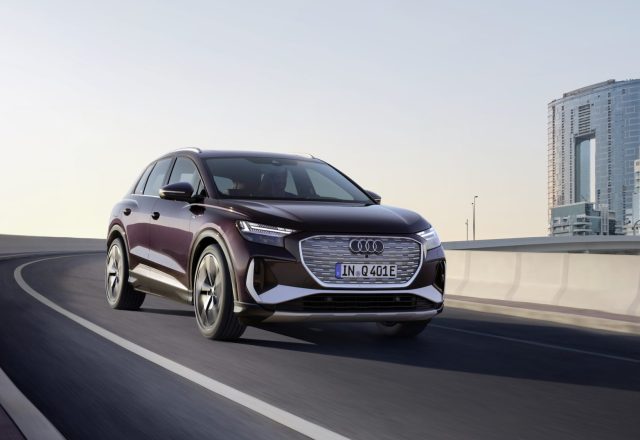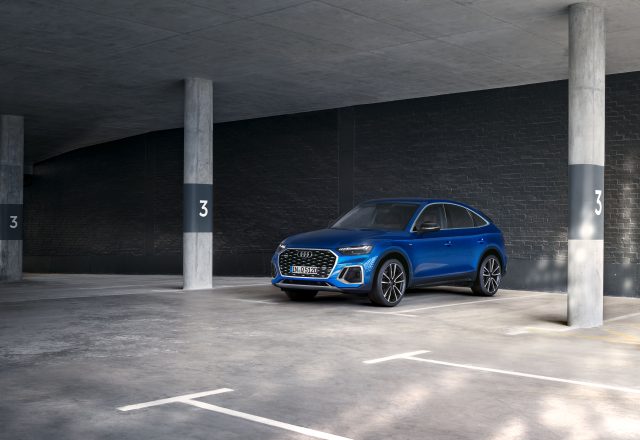If so, great, because there are lots of changes to tell you about. If not, you now have an opportunity to get to know an SUV Coupé that is sure to impress fleet managers and user choosers. Just in time for IAA Mobility in Munich, Audi has launched an upgraded version of its flagship in the Q family: the new Audi Q8 comes in an expressive design and shines thanks to new lighting technology. A fact that should make user choosers smile. But let’s start at the beginning.
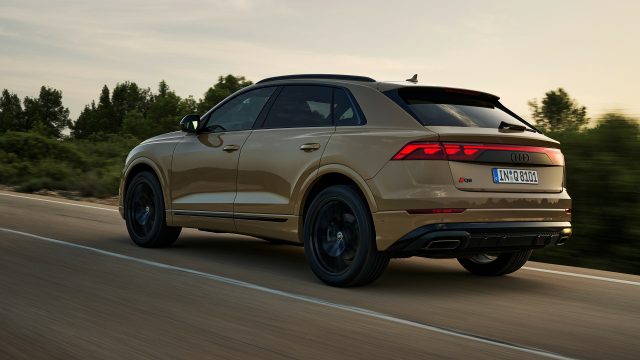
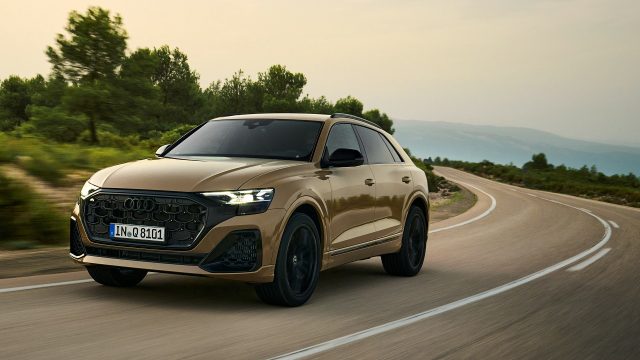
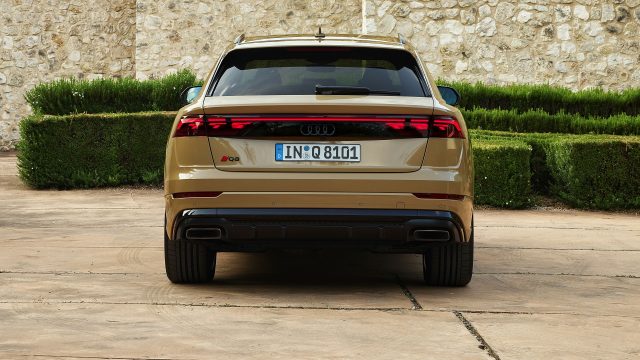
Revised, generous, striking
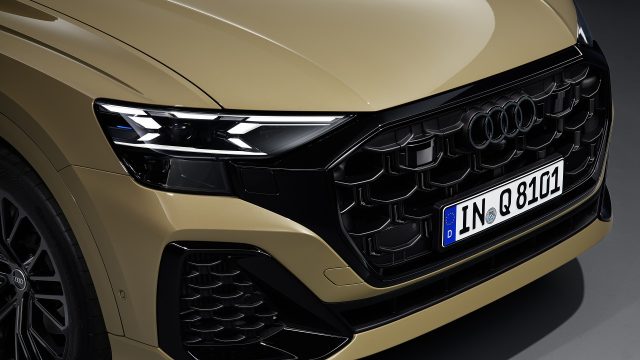
The revised Q8 represents the sporty, elegant SUV Coupé from the brand with the four rings – and at the same time the modern design language of the company. With its clean shape, generous surfaces and clear volume, the Q8 paints a dynamic picture. The short overhangs and long wheelbase create sporty, elegant proportions that can be accentuated with striking exterior colours and wheels.
The unmistakably powerful and upright Audi Singleframe with an octagon design now impresses with vertical inlays. They are arranged in teardrop shape in the base exterior and designed in the shape of an L in the S line exterior package and the SQ8 TFSI (fuel consumption combined in l/100 km: 12.8–12.0; CO₂ emissions combined in g/km: 291–272. Consumption and emission values are only available according to WLTP and not according to NEDC for these vehicles)¹⁾. This makes it clear at first glance that the Q8 belongs to Audi’s top models and clearly differentiates it from the A models. The confident appearance of the Q8 is underscored by the new prominent air intakes, which are clearly integrated into the car’s basic architecture.
Spot on. But innovative!
Audi has systematically reduced the decorative elements for an even more puristic design. To distinguish the base version, S line exterior package and S model at first glance, the front bumper area, door trim strips and diffuser in the base model come in contrasting colours that underline the robust off-road look. New for all Audi Q8 units is an exhaust system with visually appealing tailpipes. Aligned even more closely with the SQ8 TFSI (fuel consumption combined in l/100 km: 12.8–12.0; CO₂ emissions combined in g/km: 291–272. Consumption and emission values are only available according to WLTP and not according to NEDC for these vehicles)¹⁾, the S line exterior package stands out with its clearly accentuated side air intakes in the front bumper.
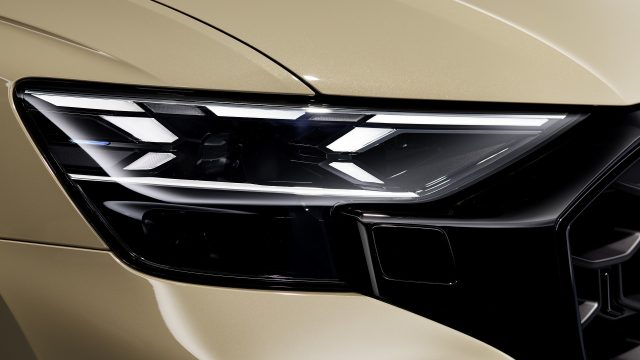
The innovative headlights with HD LED matrix technology and an additional laser light as well as the digital daytime running lights positioned on the upper horizontal edge give the Q8 an even more confident expression. In conjunction with the digital OLED rear lights, which are available for the first time on the Q8, the upmarket character of the model becomes even clearer. At the rear, an LED light strip together with a black, high-gloss trim and integrated Audi rings links the digital OLED rear lights across the entire width of the car.
A new kind of individualisation
High-intensity LED headlights illuminate the road as standard in the Q8; LED matrix headlights are available as an option. In addition, HD LED matrix headlights with Audi laser light are optionally available, each featuring 24 LEDs and a high-power laser diode and instantly recognisable via a blue ambient light incorporated into the headlights. The laser light becomes active from 70 km/h and significantly increases the range of the high beam. New for the top-of-the-range headlights are the digital daytime running light signatures. They give the Q8 its characteristic and unmistakable appearance by allowing the user to select one of four individual signature lights via the MMI. However, it is not only the extended range of functions in the headlights that is novel, but also their design. The higher positioning of the daytime running lights gives the Q8 more visual width and also creates a flowing formal connection between the headlights and the Singleframe. For the first time, the Q8 also features large digitalised OLED (organic light emitting diode) rear lights as an optional extra, which also feature four digital signature lights in conjunction with the headlights.
Similar to the Audi A8 and Q5, the digital OLED rear lights incorporate proximity detection that works in tandem with the assist systems: when vehicles from behind come within two metres of the stationary Q8, the control unit activates all of the digital OLED segments. Additional functions include dynamic turn signals as well as various coming home and leaving home sequences.
Decorative finishes, colours, wheels
With the latest product upgrade, Audi has once again refined the equipment programme for the Q8. The seams on the seat trim for the base model now come as standard in a contrasting grey colour. There is also a choice of nine decorative inlays. Adding to the available options in the equipment lineup are: wood fine-grain ash natural silver for the standard model, Carbon twill matt and Aluminium linear silver grey for the Q8 featuring the S line sport package, as well as for the SQ8 TFSI (fuel consumption combined in l/100 km: 12.8–12.0; CO₂ emissions combined in g/km: 291–272. Consumption and emission values are only available according to WLTP and not according to NEDC for these vehicles)¹⁾.
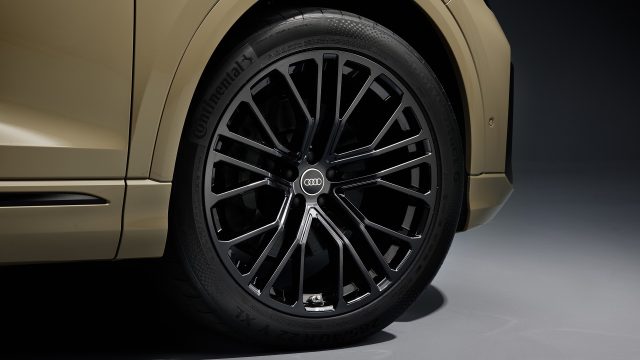
What’s new app?
Audi is also expanding its range of apps as part of the model update. For the first time passengers can use popular apps from third-party providers (such as Spotify or Amazon music). Regular software updates and a constantly growing range of products enable even greater individualisation of the infotainment system. The store with market-specific app portfolio expands the third-generation modular infotainment toolkit (MIB 3). The Audi virtual cockpit displays a range of information including a lane change warning, other road users (trucks, cars and motorcycles), distance warning, intersection assist and traffic light information online in impressive full HD quality. In addition to the store for apps and the new surroundings display, the standard equipment for the Q8 is also being enhanced with the product upgrade – 20-inch alloy wheels, a reversing camera, park and high-beam assist and the convenience key, among other features, now come as standard.
The upgraded Audi Q8 has been available to order since September.
All information applies to the German market. The vehicle images show optional equipment.
1)Information on fuel/power consumption and CO₂ emissions given in ranges depends on the equipment selected for the vehicle.The specified fuel/power consumption and emissions figures were determined according to the measurement procedures prescribed by law. On 1 January 2022, the WLTP test cycle replaced the NEDC test cycle fully. This means that NEDC values will not be provided for new type-approved vehicles after this date. The information does not refer to an individual vehicle and is not an integral part of the offer. It is provided solely for the purpose of comparison between the different vehicle types. Additional equipment and accessories (e.g. add-on parts, different tyre formats etc.) may change the relevant vehicle parameters, such as weight, rolling resistance and aerodynamics, and, in conjunction with weather and traffic conditions and individual driving style, may affect fuel consumption, electrical power consumption, CO₂ emissions and the performance figures for the vehicle. Because it involves more realistic testing conditions, the fuel consumption and CO₂ emission values calculated in accordance with the WLTP are in many cases higher than those calculated in accordance with the NEDC. As a result, there may be corresponding changes to vehicle taxation starting on 1 September 2018. Further information about the differences between WLTP and NEDC can be found at www.audi.de/wltp.
Further information on official fuel consumption figures and the official, specific CO₂ emissions of new passenger cars can be found in the “Guide on the fuel economy, CO₂ emissions and power consumption of new passenger car models”, which is available free of charge at all sales dealerships and from DAT Deutsche Automobil Treuhand GmbH, Hellmuth-Hirth-Str. 1, 73760 Ostfildern, Germany, or at www.dat.de/co2.
Status: 10.10.2023
© Audi
